
Review on 🏠 Aprilaire 400Z 400 Whole Home Humidifier: Automatic Water Saver Furnace, Large Capacity for Homes up to 4,000 Sq. Ft. by Takeshi Krzywicki

Makes a big difference and isn't too complicated to install - just takes a long time
AprilAire 400 installed in Heil Forced Air/AC HVAC system Full Disclosure: I'm not an HVAC installer, plumber, or electrician (I'm not even a mechanic) and had never attempted such a project before. I did not receive this product in exchange for a review. I understand it's happening. Please read the entire text and especially the FOLLOWING NOTES. After fully investigating the installation procedure by watching several YouTube videos and reading the manufacturer's manual and installation leaflet for the controller and main unit of the Model 60, I decided to order this humidifier to replace a non-working unit from another brand . WARNING. Make sure the HVAC circuit is turned off before installation. Give yourself enough time to complete this project. So if it's a very cold day, now might not be the right time to try this project as you won't be able to heat your house at that time. The whole project took me about 5 hours, give or take. Some of these required additional hardware such as a new bypass, wire nuts, zip ties, etc., so shopping trips took more time. I had to take a few things with me to complete the required tasks. Installation. I bought a jigsaw blade for cutting metal to enlarge an existing cut for an AprilAire 400, 100 feet of two strand 20 gauge solid wire (tried to find stranded but couldn't find the right gauge and length), a small one piece of tubing. Silicone caulk to seal the hole I had to drill outwards for the temperature sensor, a masonry/brick drill bit (make sure you have enough length!), a special metal drill bit (for the control sensor mounted on the return duct) - it was basically a 3/4 round -inch piece as needed, with the main drill bit in the center so the hole is centered and accurate), a couple of zip ties to control the wire, a pack of wire nuts matching the dimensions of the wires to be joined, a 6 Foot of expandable and flexible channels for the bypass (from the return channel to the humidifier - the existing piece was too short to reach the new humidifier so I decided to just replace it with something more workable) , and a roll of scotch- Foil (does not become brittle like regular tape). I already had: 1. copper pipes for plumbing2. Wire Stripper/Cutter 3. Black & Decker 9.6V Cordless Drill4. Copper pipe cutter (device that fits over the pipe and rotates until it cuts through)5. Existing 24V connection with sufficient power (from the previous humidifier)6. Tin snips for cutting where I couldn't use a jigsaw7. Wood drill bit (to drill a hole in the floor to install an outside temperature sensor) 8. Self-tapping screws to attach the old humidifier9. Longer (3/4 inch) self-tapping screws for attaching the control sensor to the supply duct10. Puzzle11. Various other tools, e.g. B. Wrench and screwdriver. Cutting the supply air duct behind the humidifier mounting point. I didn't have any holes to use on this side of the house. The other sides were either south or just too difficult to reach from the basement. The second most tedious part I cut the existing humidifier's duct hole larger. I used a jigsaw where I could, but I had to do some tin snips work. The assembly of the poppet valve seemed almost too easy to me. I decided to span the hot water line directly from my water heater (about 4ft) which is right next to the stove anyway. I sealed the threaded holes on the removed humidifier to prevent air leakage. and also wider than the new device and had a much smaller channel opening behind it. High-level procedure: 1. Start the outside temperature sensor. 2. Turn off the power to the HVAC3 system. If necessary, remove the existing humidifier4. Drill a 3/4" hole in the return duct to install the steering sensor (refer to brochure for clearance requirements). 5. Route the wires where they should be routed according to the rudder sensor instructions making sure it is flat (installation instructions page) and circle where you need to cut it, then cut it 7. Install the humidifier in the new duct opening 8. Install a poppet valve or PVC, but I did it anyway. 9. Route copper tubing to humidifier solenoid valve. Tighten according to instructions. Seat valve 12. Connect 24 V as described in the instructions. Be very careful with this part, it confused me a bit at first. Look at the picture to understand better 13. Connect 1/2 inch inside diameter (ID). ) Piping to drain or condensate pump 14. Restore water supply - check for leaks (check again after a while - it often takes a while for some leaks to appear if they are small) 15. Restore the Restore power to the HVAC16 system. Check the device according to the instructions to make sure it is working properly. This was easily remedied by tightening everything but the saddle mount itself. Do not overtighten the bracket itself as this may damage the tube. Just make sure it's tight and secure. It should NOT slide easily when properly installed. The leak I encountered was in the tube compression joint itself. I had to use tin snips when cutting the portions of the rectangle behind the humidifier, mainly because the cooling coil that sits behind that area had some coolant tubes that were too close to the section to be cut. If I used the whole puzzle I would damage the cooling tubes. Be careful with that. This review may contain errors for which I apologize in advance and accept no responsibility. Read your instructions carefully. It is recommended that the installation be performed by a qualified HVAC installer. My order of events reflects my actual order of events, but some things probably could have been done in a different order. If in doubt, hire a specialist to do it.
- New
- Protection
New products
Comments (0)
Top products in 🌫️ Humidifiers
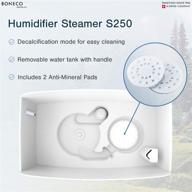
BONECO Digital Humidifier S250 Cleaning

48 Review
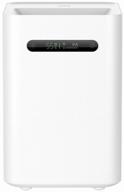
Humidifier Smartmi Evaporative Humidifier 2, CJXJSQ04ZM Global, white

144 Review

Xiaomi Smart Antibacterial Humidifier (ZNJSQ01DEM / SKV4140GL), white

154 Review
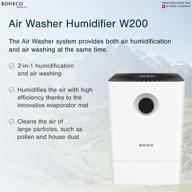
BONECO W200 Air Washer: Humidifier and Purifier for Improved Air Quality

95 Review
Another interesting products

🥶 LG TC09GQR Split System Air Conditioner - White

11 Review
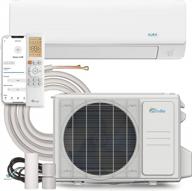
Senville AURA: Energy Star Mini Split Heat Pump W/ 9000 BTU & Alexa Compatibility

13 Review
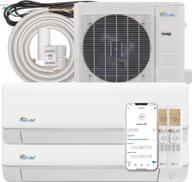
White Senville Dual Zone Mini Split Air Conditioner Heat Pump, 28000 BTU, Alexa Compatible - SENA-30HF/D

21 Review
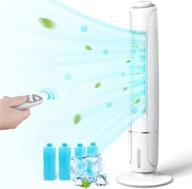
COMFYHOME 3 IN 1 Portable Evaporative Air Cooler - 60°Oscillation, 12H Timer & Remote, Windowless Room AC For Bedroom Home Office

11 Review

